Costa Rica - February 2004
We and two other couples traveled to Costa Rica on an eco-tourism adventure. Our group included two profesional geologists, several avid birders, an avid orchid enthusiast, and a couple of enthusiastic photographers (including myself), all lovers of nature in all its forms.
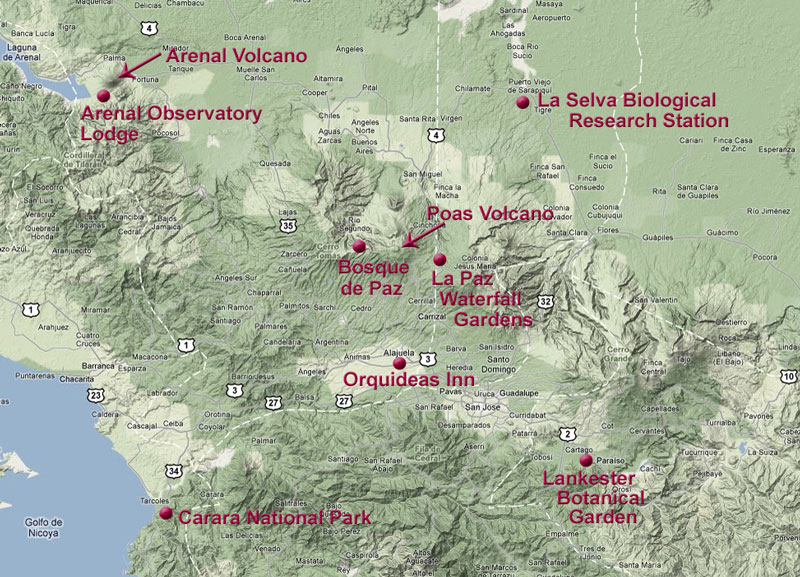
Here is a map showing the places we visited. Our travels ranged from the Pacific Lowlands to the west, to the Caribbean Lowlands to the east, and to many points along the rugged mountain ranges that divide the two major coastal plains. All of these destinations are within a day's drive from the capital city of San Jose, just south-east of the center on this map. (Map from Google with the places we visited added by me.)
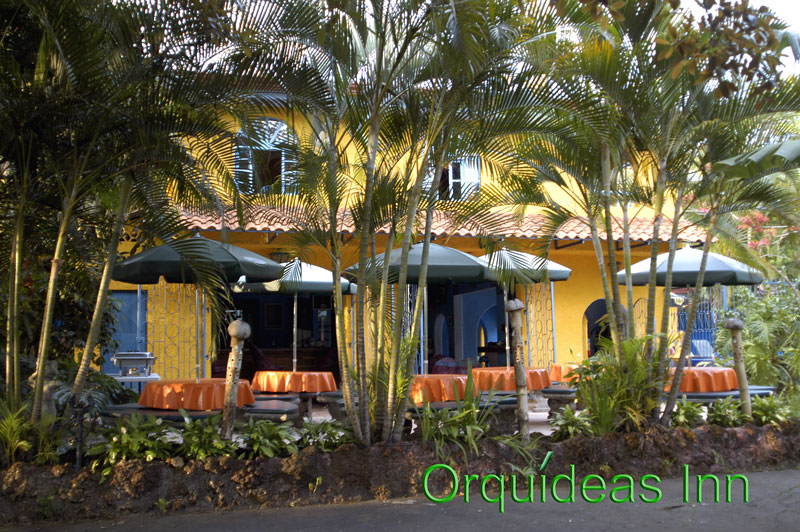
We began our adventure at the Orquideas Inn in Alajuela, just outside the capital city of San Jose (http://www.orquideasinn.com/), and we would end it there. (Orquideas is the Spanish word for Orchids - apropos given that there are an estimated 1,400+ native species in Costa Rica making it an orchid lover's paradise.) We used it as a base for exploring the San Jose area. The accommodations were nice, but a bit rustic, as you might expect in a developing country. From their web site it appears that considerable improvements have been done since our trip.
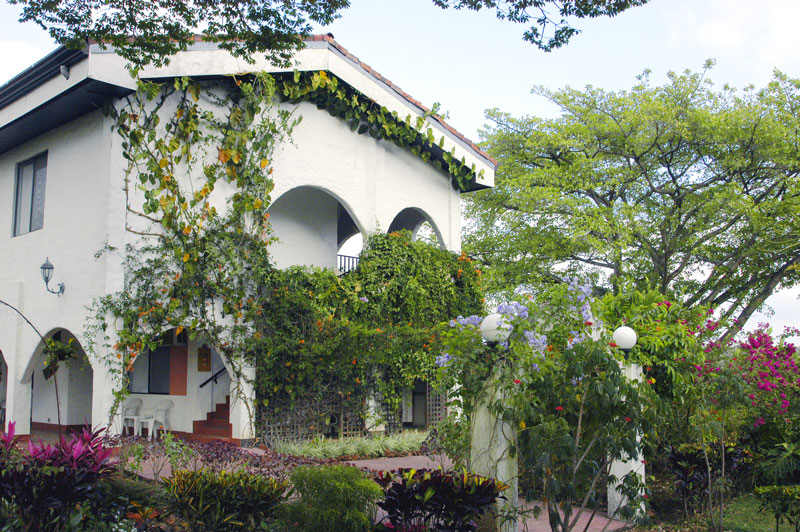
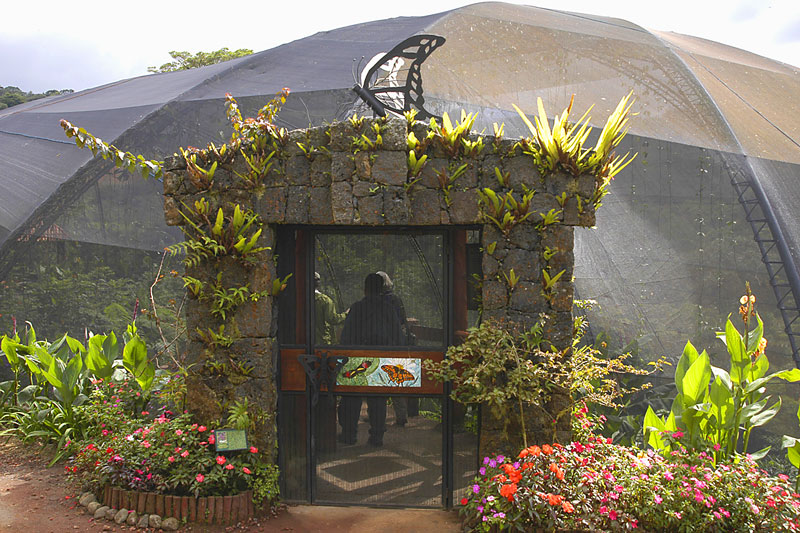
The incredible La Paz Waterfall Gardens (http://www.waterfallgardens.com/) is worth a visit and was a highlight of our stay near San Jose. There are 3.5 kilometers of trails meandering through rain forest and along a river with a series of beautiful waterfalls. Here were're entering the butterfly viewing area adjacent to their butterfly laboratory where native species are studied and bred.
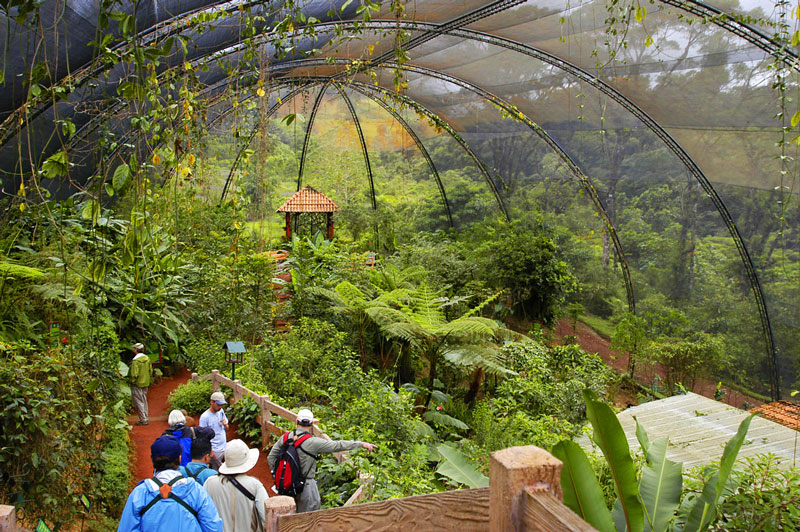
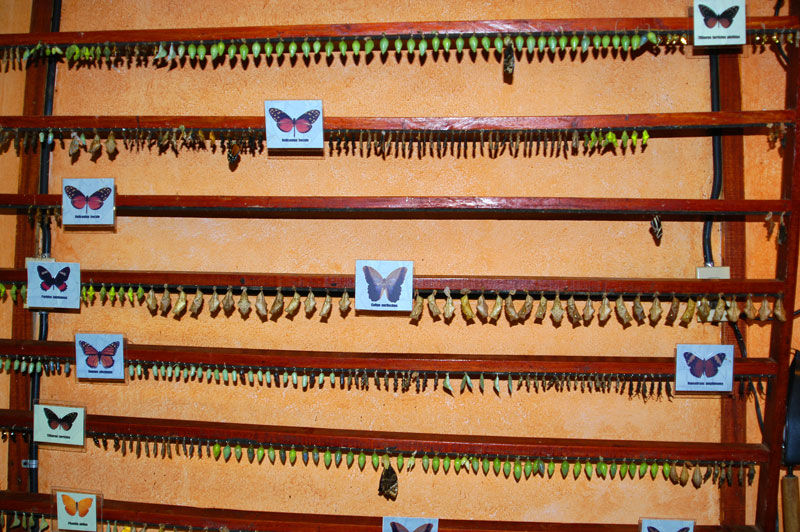
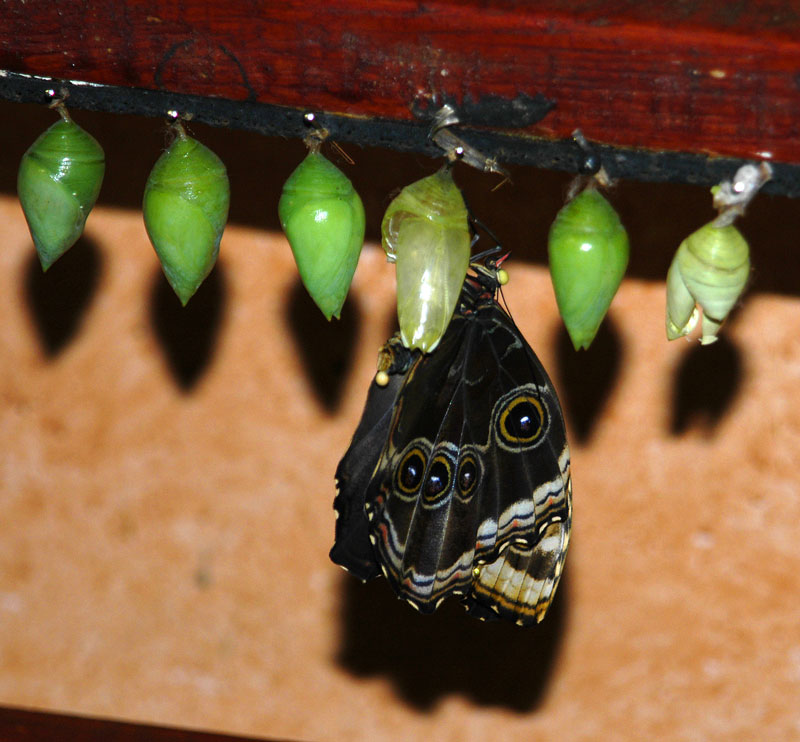
These are just a few of the hundreds of species being bred here. Here is Morpho Peleides emerging from its pupa.
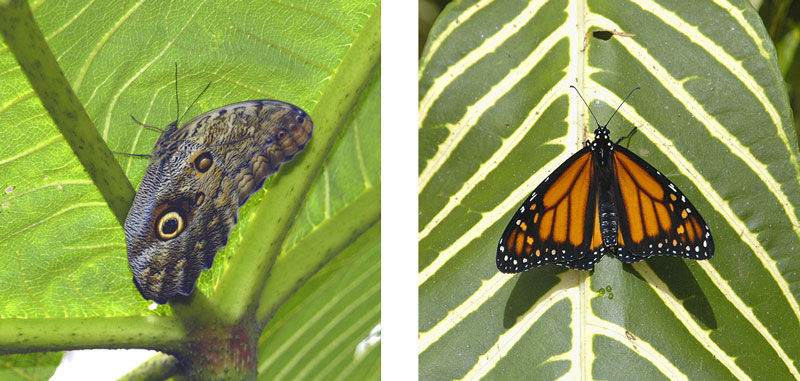
Caligo Eurilochus "The Owl", on the left, and Danaus Plexippus "Monarch", on the right.
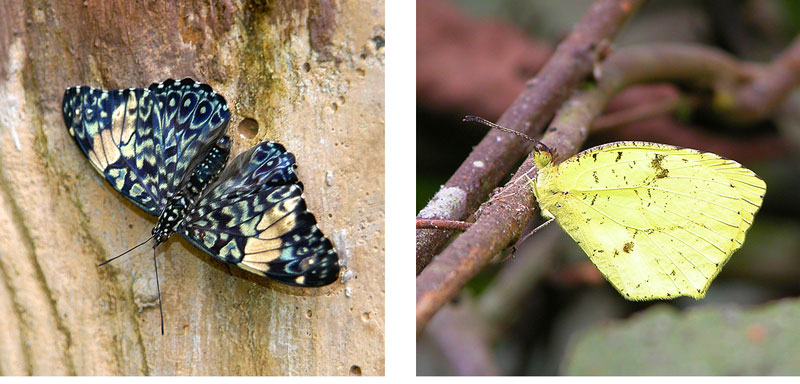
Hamadryas Amphinome on the left and Phoebis Philea (I think.) on the right.
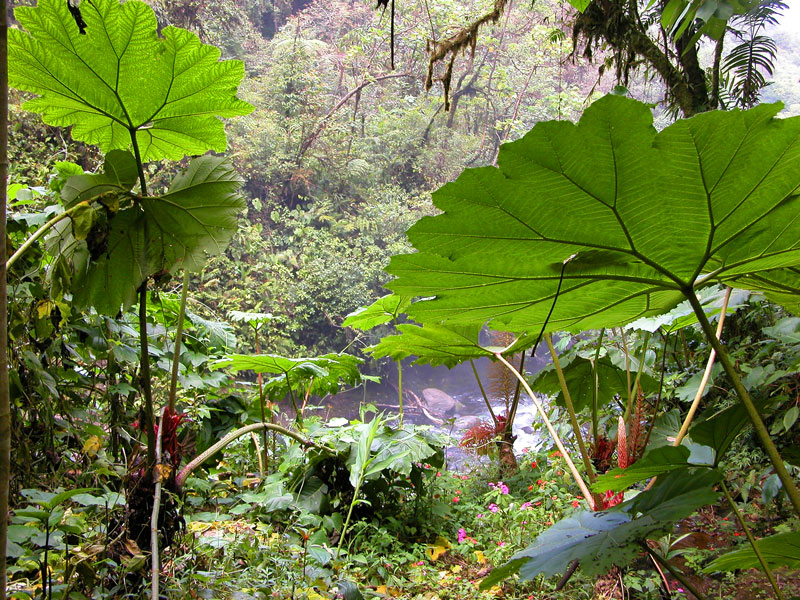
The La Paz Waterfall Gardens river.
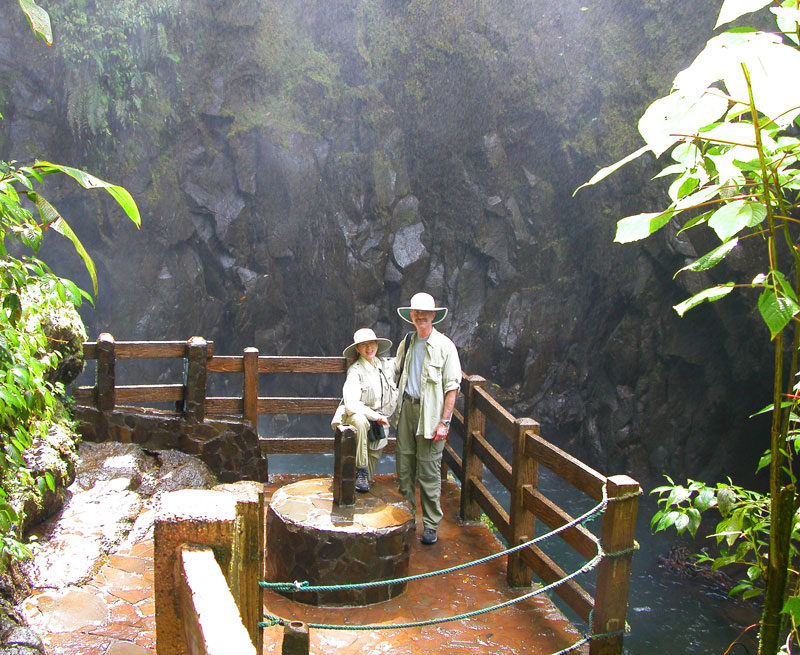
Denise and I at the bottom of the waterfall. We're dressed for the mixture of mild-to-hot and always wet weather. Photo by Lyle Rice.
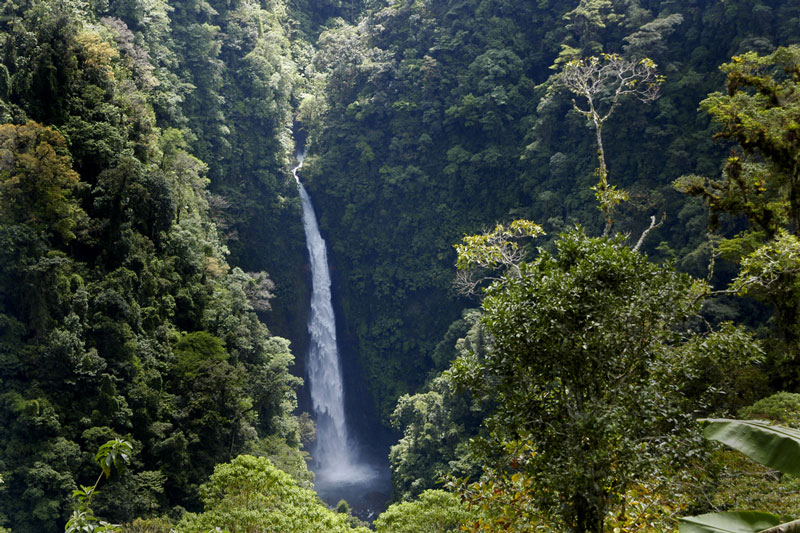
A waterfall seen from the home of Guillermo Herrera in Mirador Cinchona on the side of Poas Volcano, who provides guide services in Costa Rica. We stopped for lunch and the view.
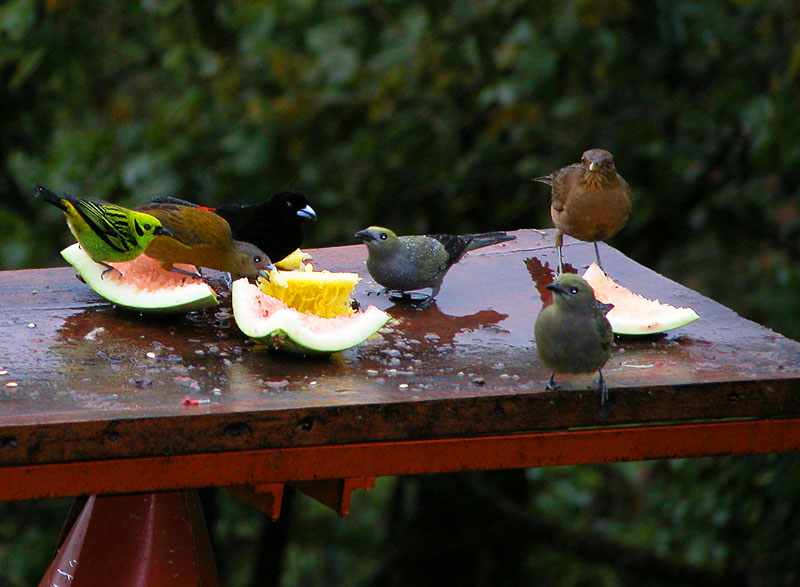
Guillermo Herrera puts out fruit to attract the colorful local birds.
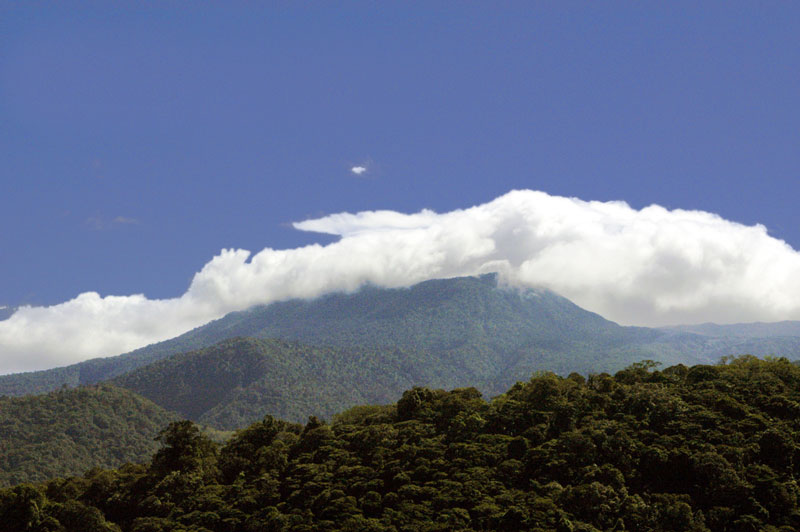
Our next day trip from the Orquideas Inn was to Poas Volcano about 20 miles to the north of San Jose. It's top was wreathed in clouds as we approached. Poas is active with frequent small eruptions; the last major eruptions occurred in 1952-54. The summit is at 8,900 feet and the active crater can be reached by an easy trail.
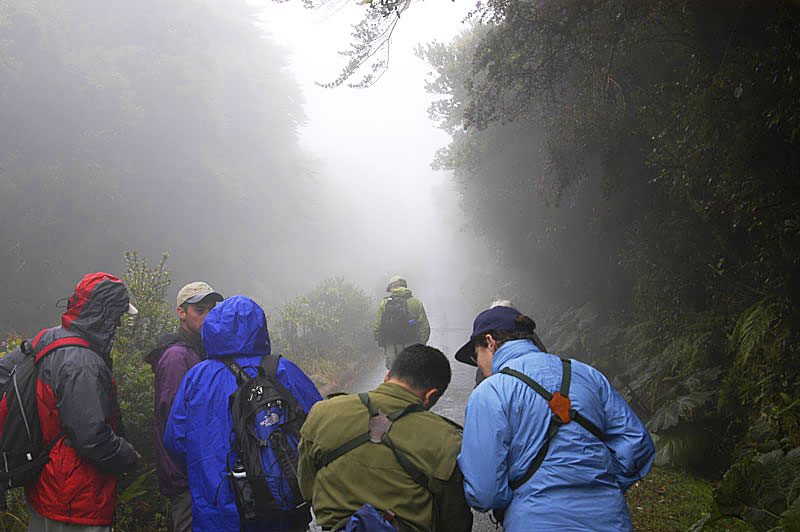
It was cold and damp as we approached the caldera. Steve takes the lead as Lyle consults with our guide and naturalist, Roy, in the right foreground. Denise is in the dark blue parka.
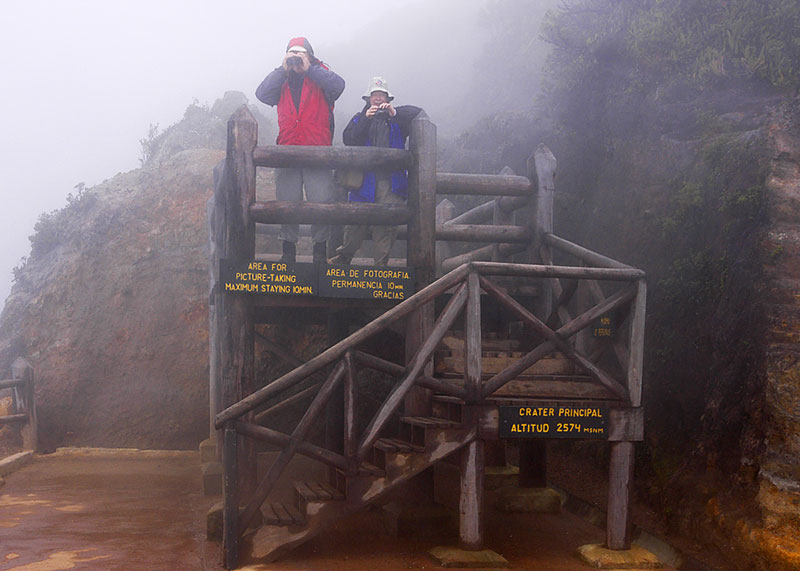
Not surprisingly we had the viewing area to ourselves. Jim, a professional volcanologist, and his wife, Susan, are trying to be optimistic.
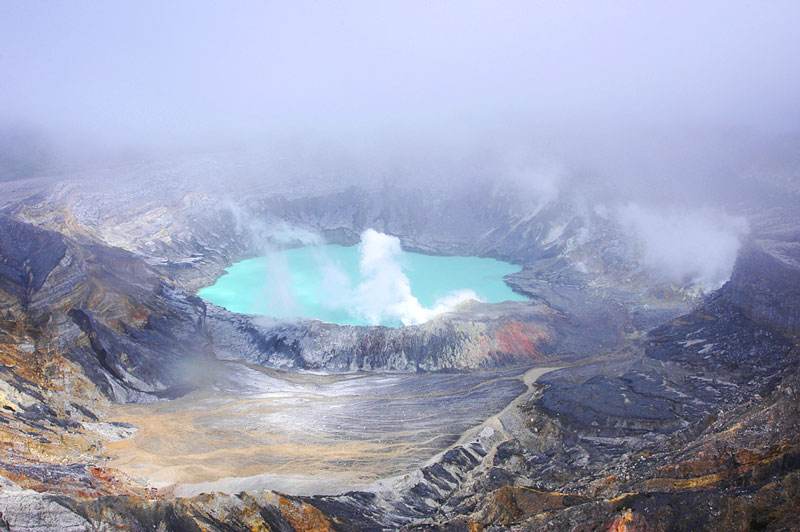
Suddenly, unexpectedly, the clouds parted to reveal the crater for a brief 10 or 15 minutes. Just enough time for some pictures. Note the many fumaroles alongside the crater lake. The caldera is 950 feet deep.
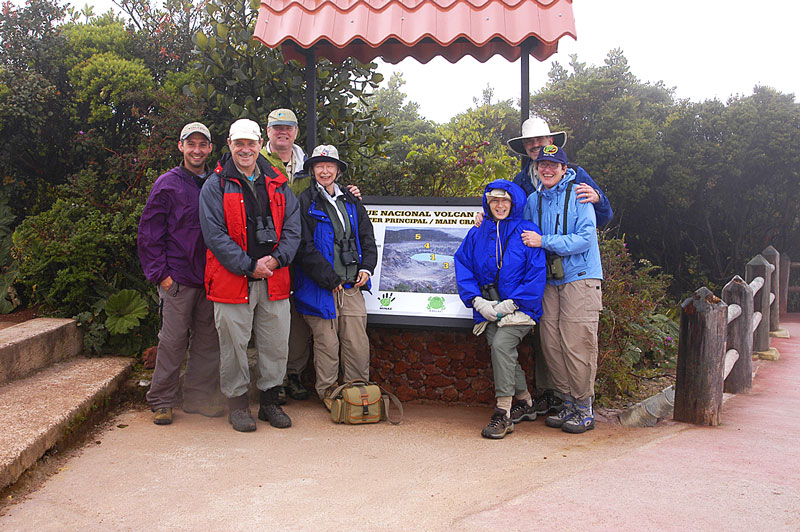
Roy kindly took a photo of our group. From the left, Piero (a native Costa Rican friend and graduate student), Jim, Steve (also a geologist), Susan, Denise, your's truly )in the big hat), and Lyle.
We then moved on to Bosque de Paz (http://www.bosquedepaz.com/), a privately owned biological reserve and eco-tourism resort of 3,000 acres that stretches between the Poas Volcano and Juan Castro Blanco National Parks. It is owned by Federico and Vanessa Gonzalez-Pinto, who were the most gracious of hosts to us and our friends. We had a splendid stay of about a week where we were able to explore the tropical cloud rain forest in the Costa Rica highlands at our leisure. I should mention that it gets quite cold at night (we were at about 5,000 feet) and the rooms aren't heated. Bring jackets and warm sleeping gear if you should visit.
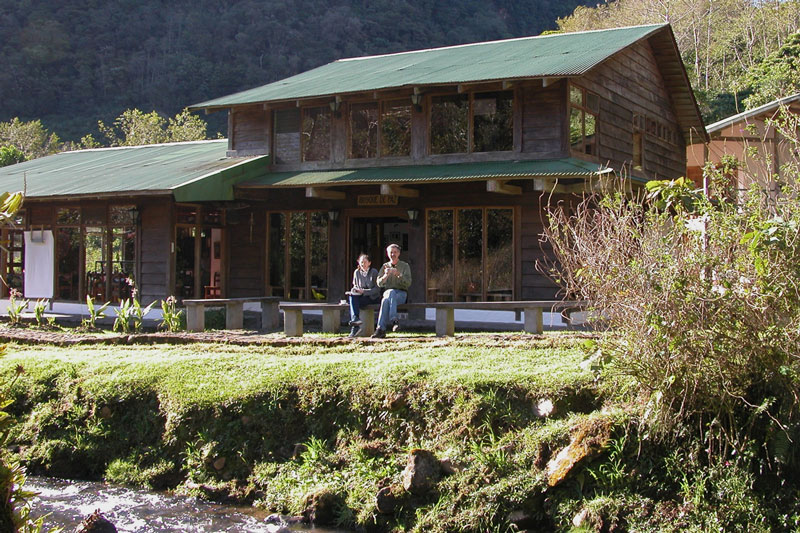
Here Denise and I are enjoying our morning coffee in front of the main building of the lodge as we await breakfast. Photo by Lyle Rice.
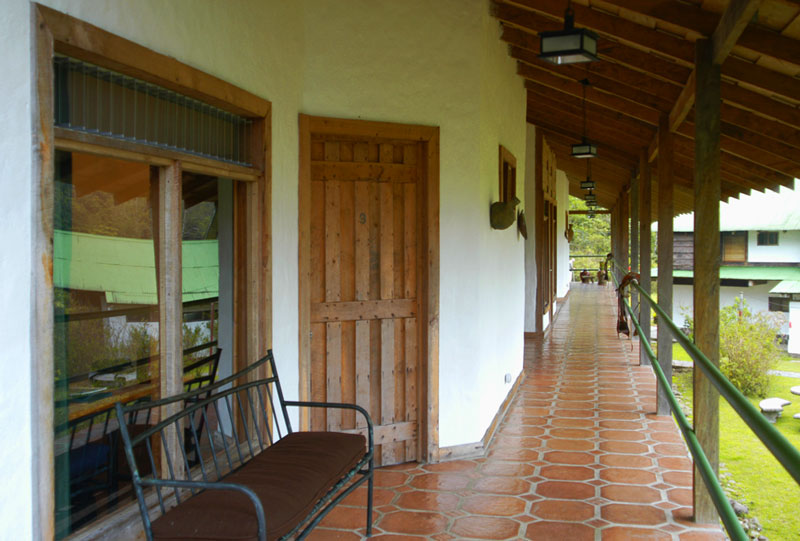
There are 12 comfortable rooms with private baths that must be reserved well in advance. We had room 9 at the near end on the second floor, probably the most private of the 12 rooms.
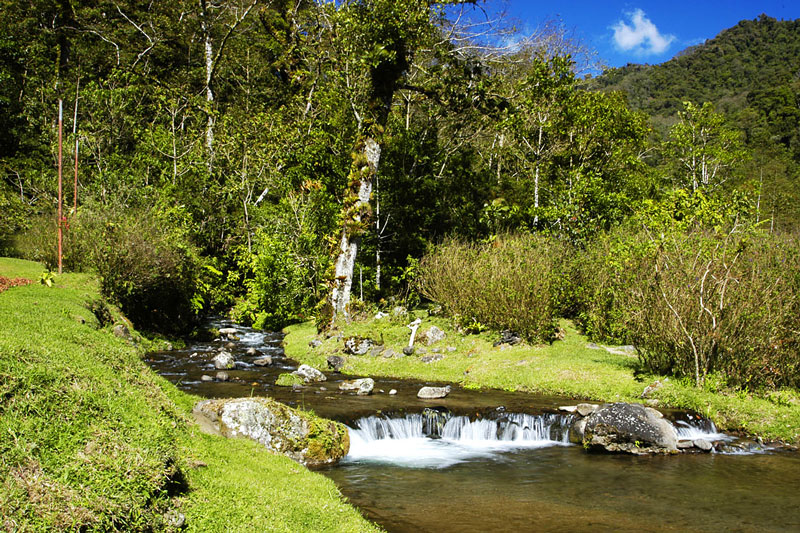
A beautiful little river flows through the valley in front of the lodge.
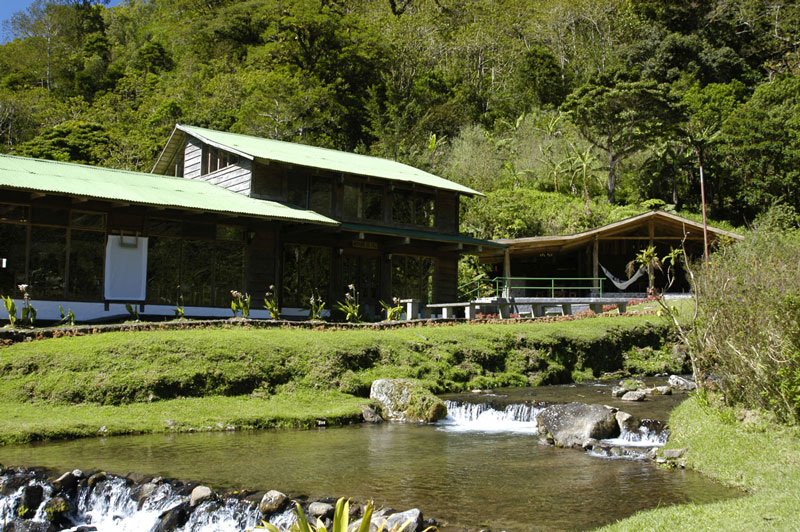
Shown are the main building of the lodge on the left and a veranda to the right for outdoor entertaining. If you look closely, you'll see Denise enjoying the hammock. Meals were served most days in the main building.
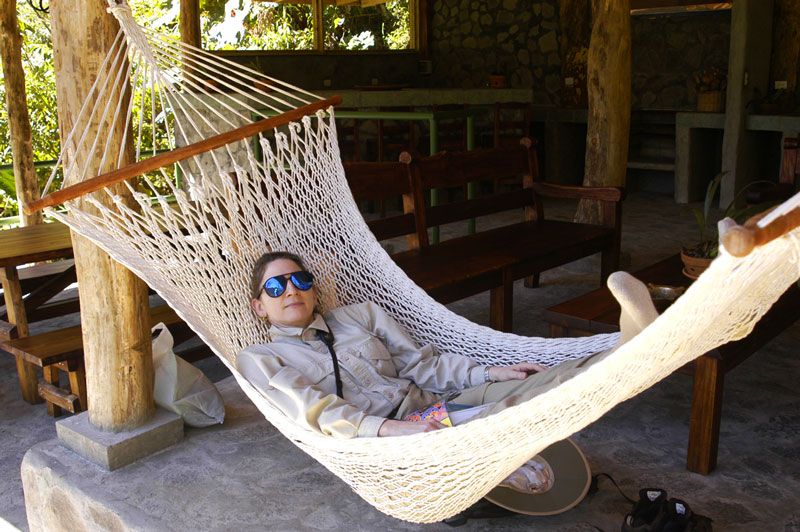
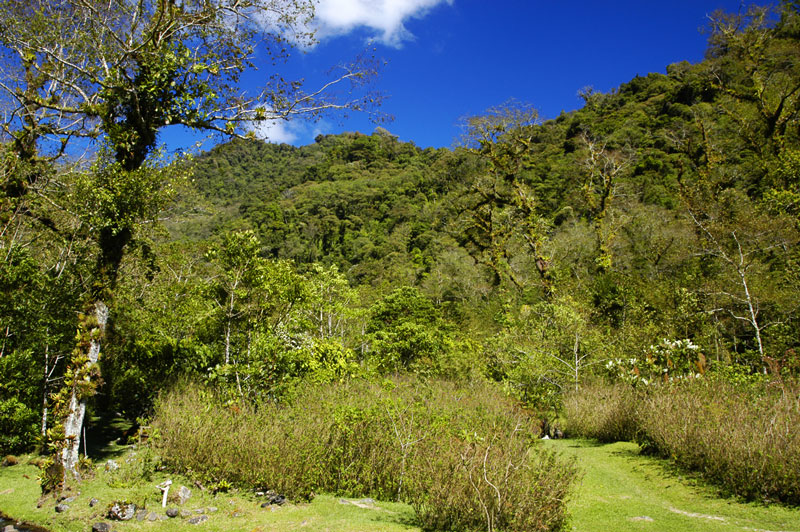
The flora in the valley is largely second growth forest that is recovering from clear cutting a recently as 20 years ago. Despite that the density and variety of flora and fauna is extraordinary. Note the dense growth of epiphytes on the trees.
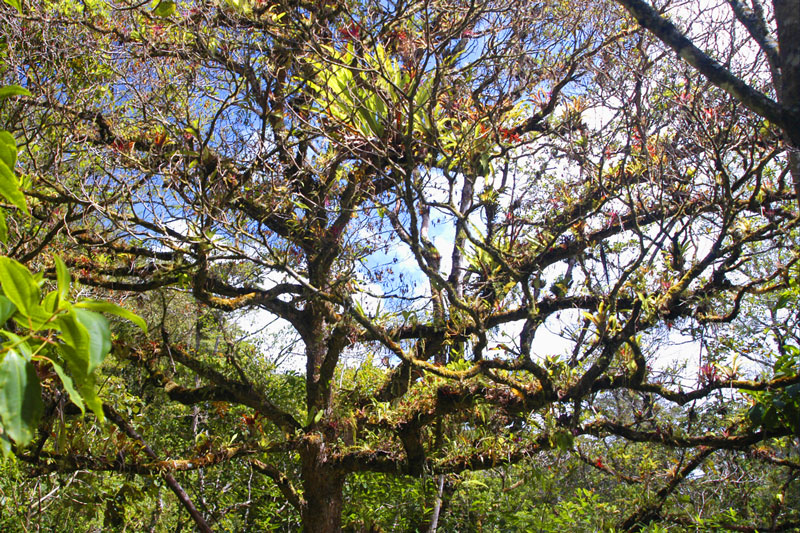
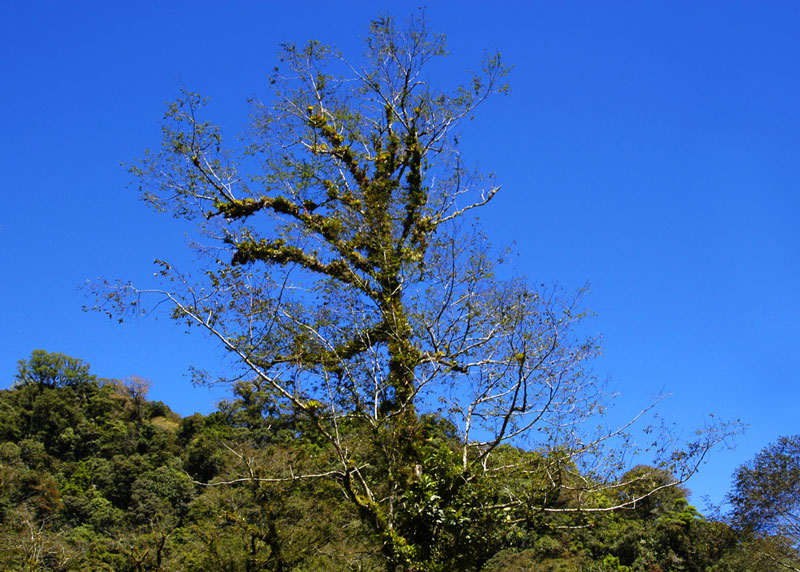
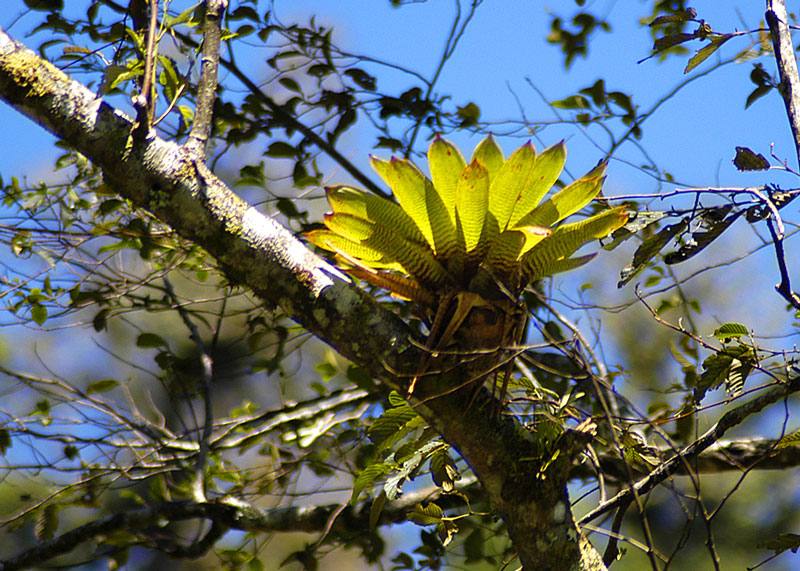
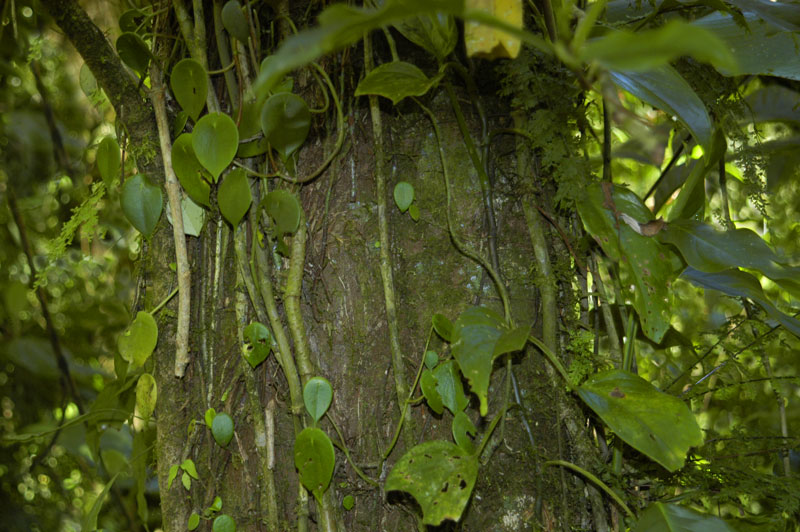
A Strangler Fig, another epiphyte, drops its roots down the side of the host tree as it grows it branches upward to collect light. Eventually the roots will completely cover the host tree and kill it.
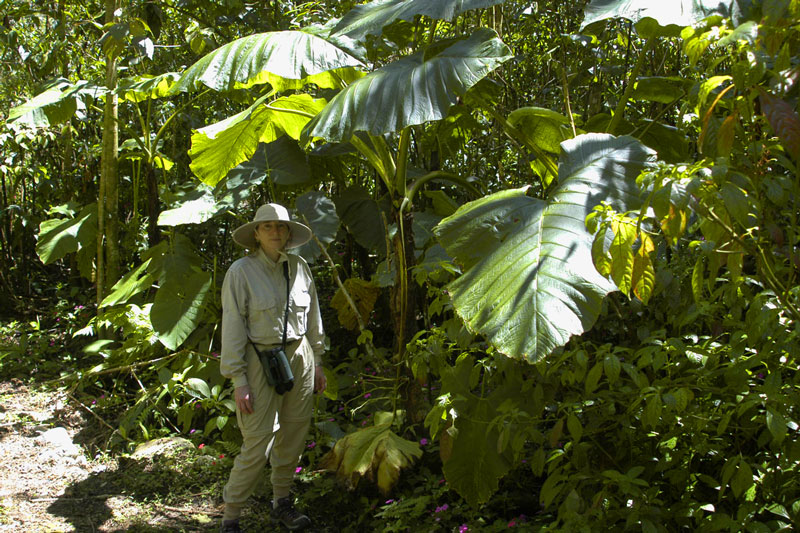
Denise in her full exploration regalia on one of the many trails in Bosque de Paz.
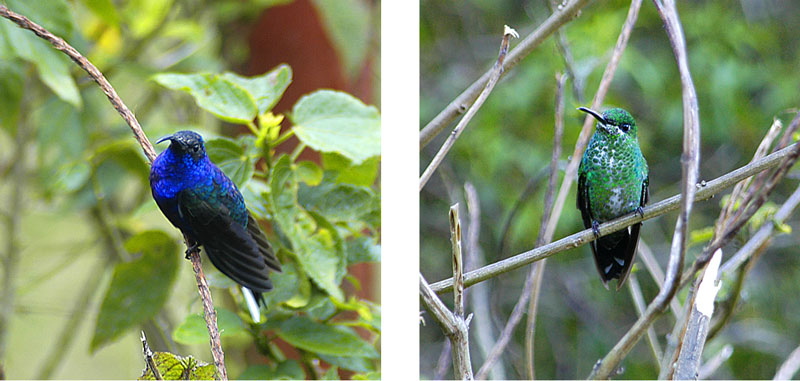
Hummingbirds were in abundance. This is the Violet Sabrewing on the left and a Green-Crowned Brilliant on the right.
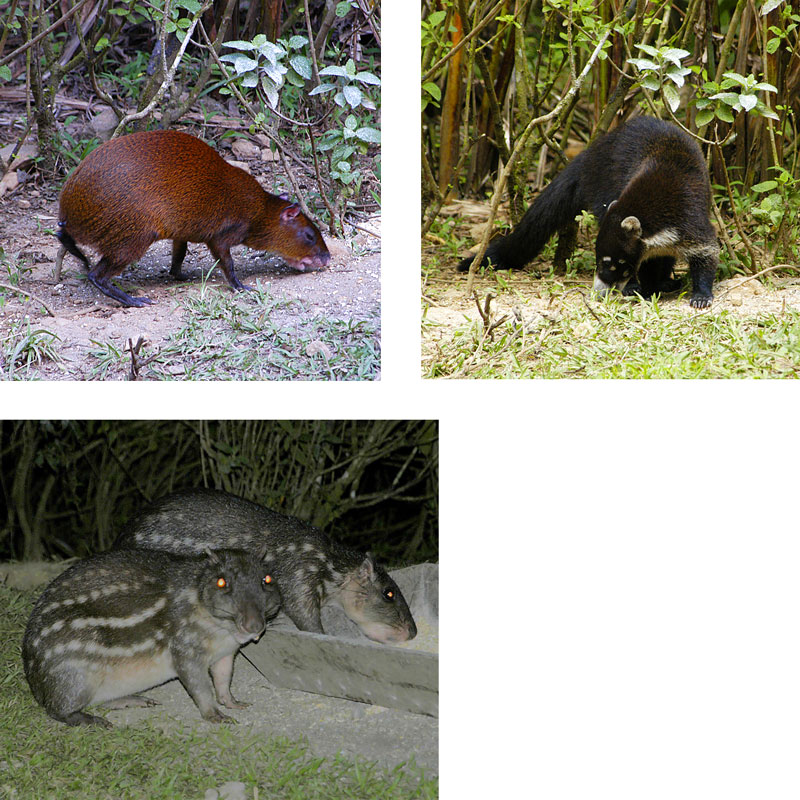
Many animals came to call during our visit to Bosque de Paz. The Agouti (top left) is a cat-size rodent related to the guinea pig. The Paca (bottom) is a nocturnal cousin to the Agouti, and can grow to 3 feet in length. The Coatimundi (top right) is in the racoon family.
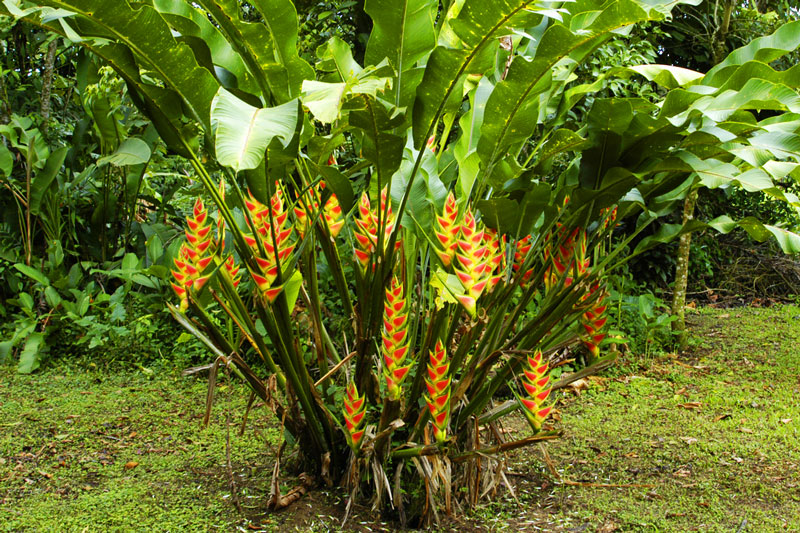
We took a day trip to the La Selva Biological Station which is devoted to ecological research. La Selva is part of the Organization for Tropical Studies (http://www.ots.ac.cr/) and is considered one of the most important sites in the world for research on the tropical rain forest. It is located in the northern Caribbean lowlands adjacent to the Braulio Carrillo National Park. Here are two of many Heliconia species we saw there.
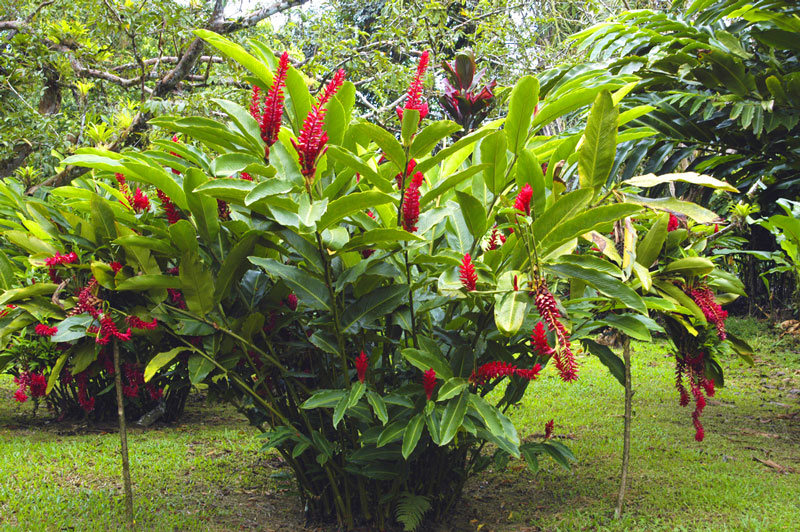
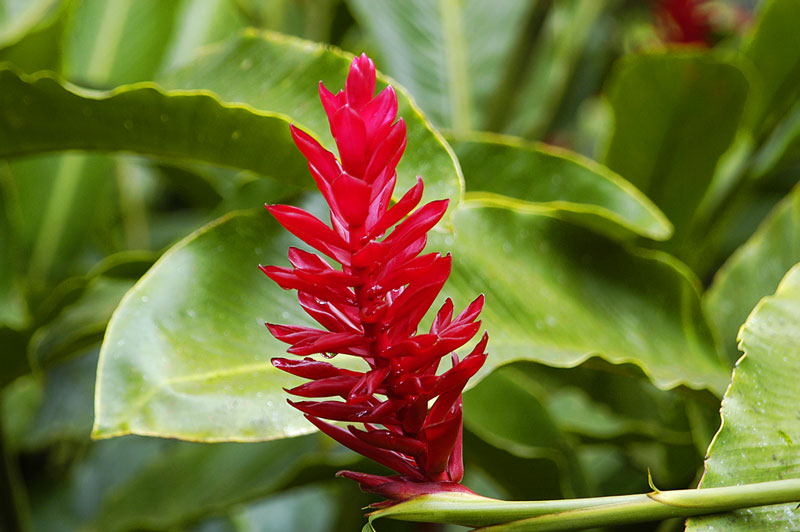
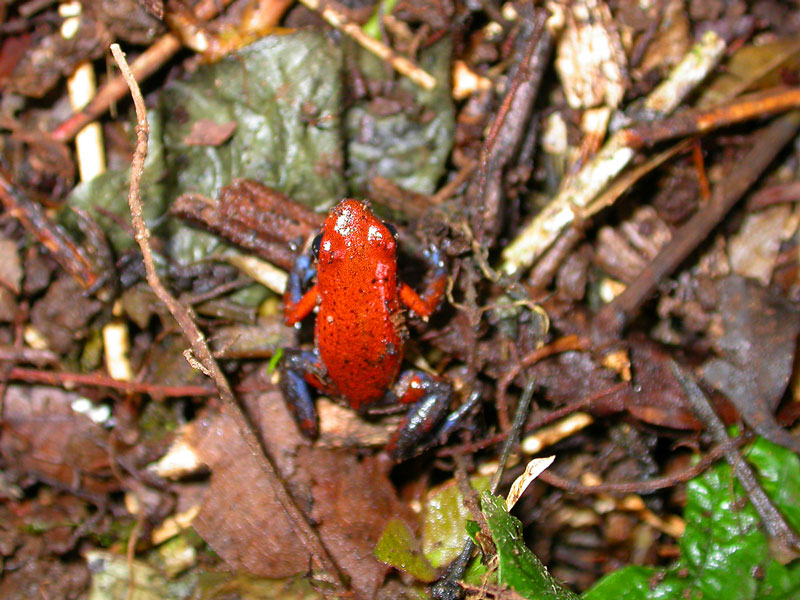
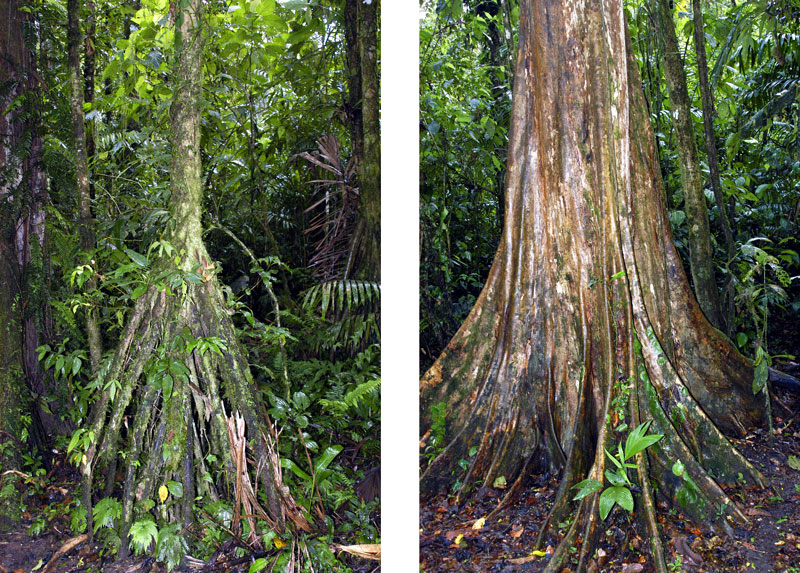
A "Walking Palm" on the left and a Banyan tree on the right.
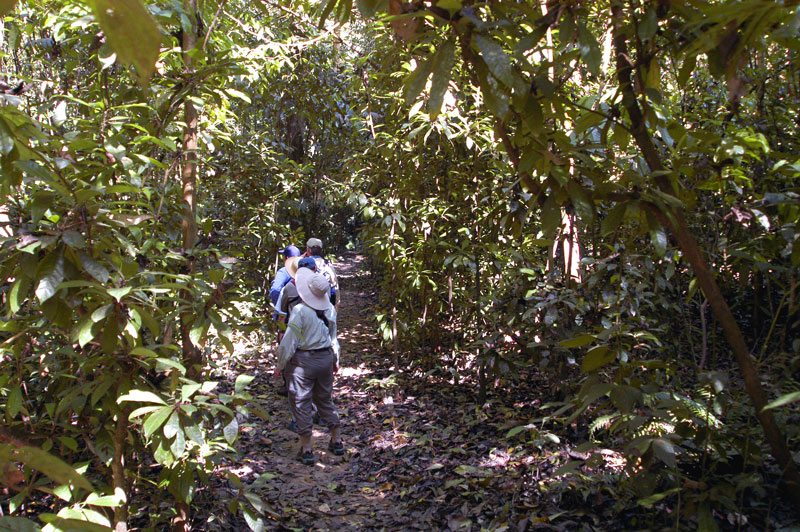
Another day trip took us to the Carara National Park in the Pacific Coast lowlands near Tarcoles, 30 miles west of San Jose. (http://www.costarica-nationalparks.com/cararanationalpark.html). Perhaps the most exciting moment we had here was a siting of a Scarlet Macaw. That had our birders going crazy. Unfortunately, our photographers weren't up to the task of capturing it in a photograph: no one had a long enough focal length lens.
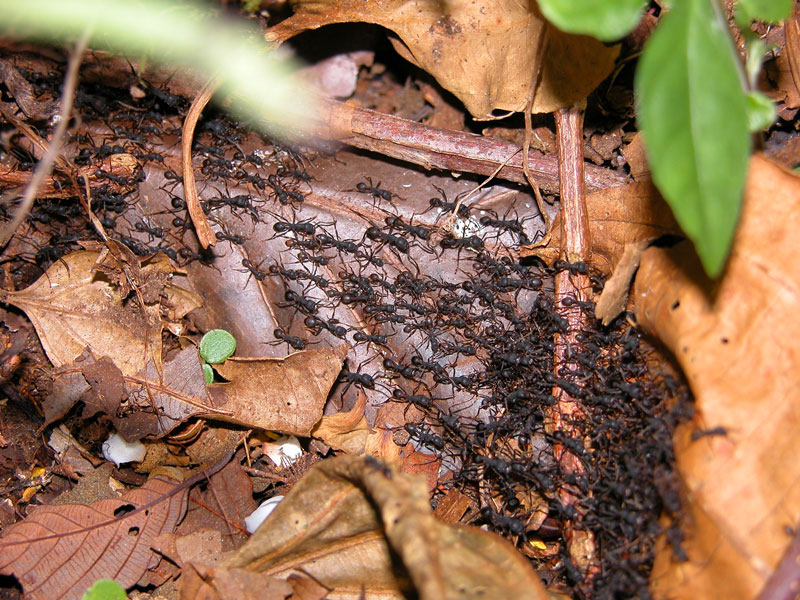
Army ants move across the jungle floor in column that can take hours to pass. Army ants are dangerous, but people simply get out of their way. If they invade a home, the residents leave taking their food and let the ants clean out any vermin, at which point the ants move on and the people move back in to a clean house.
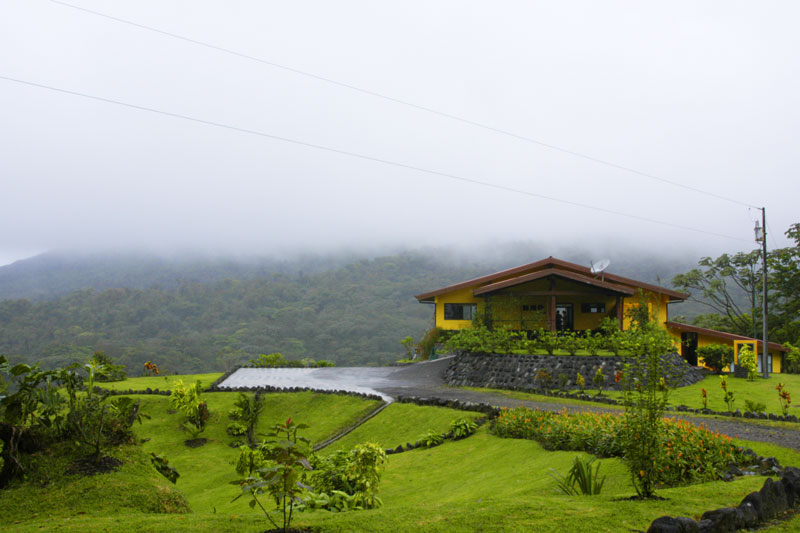
After our stay at Bosque de Paz we moved on to Arenal Volcano where we stayed at the Arenal Observatory Lodge perched on a ridge only 1.7 miles from the Volcano crater (http://www.arenalobservatorylodge.com/EN/). Through a connection we were able to stay in a private residence (below) reserved for researchers which was very comfortable. The volcano rises above the house in the distance. We were near enough that we were able to hear frequent explosions and rock falls on the volcano.
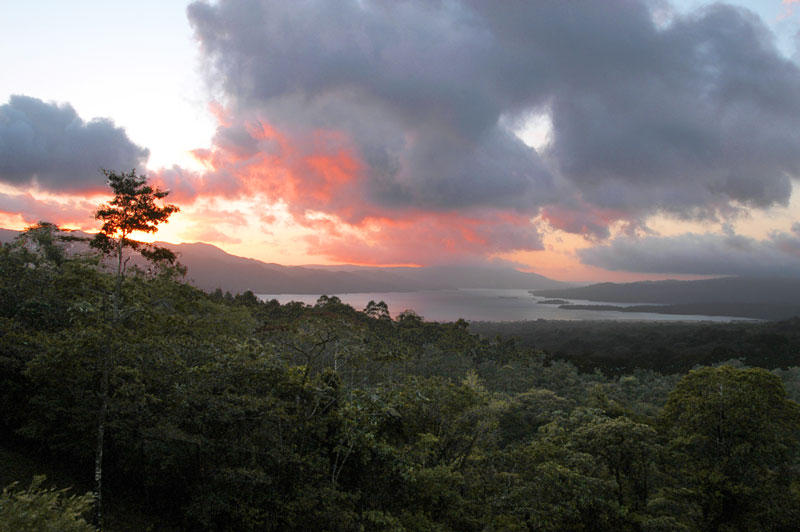
Sunset over Lake Arenal from our balcony facing north.
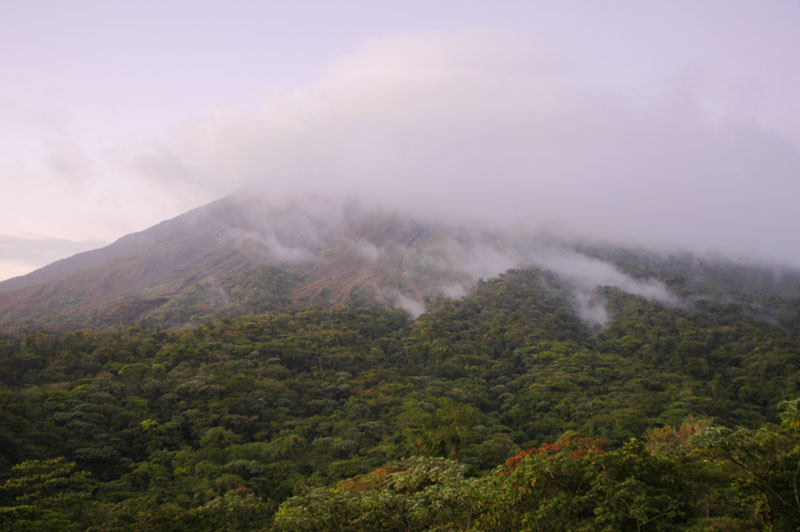
We never did see the top of the volcano. A persistent cloud cover hid its peak.
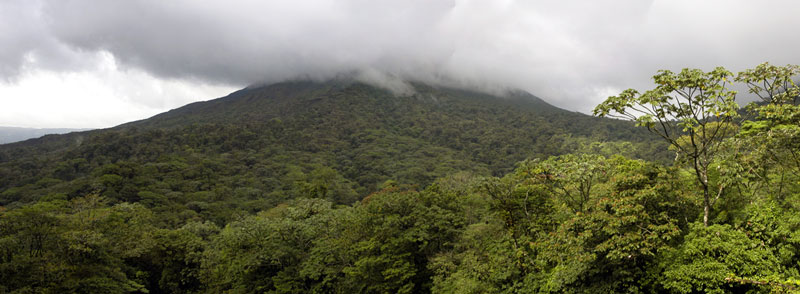
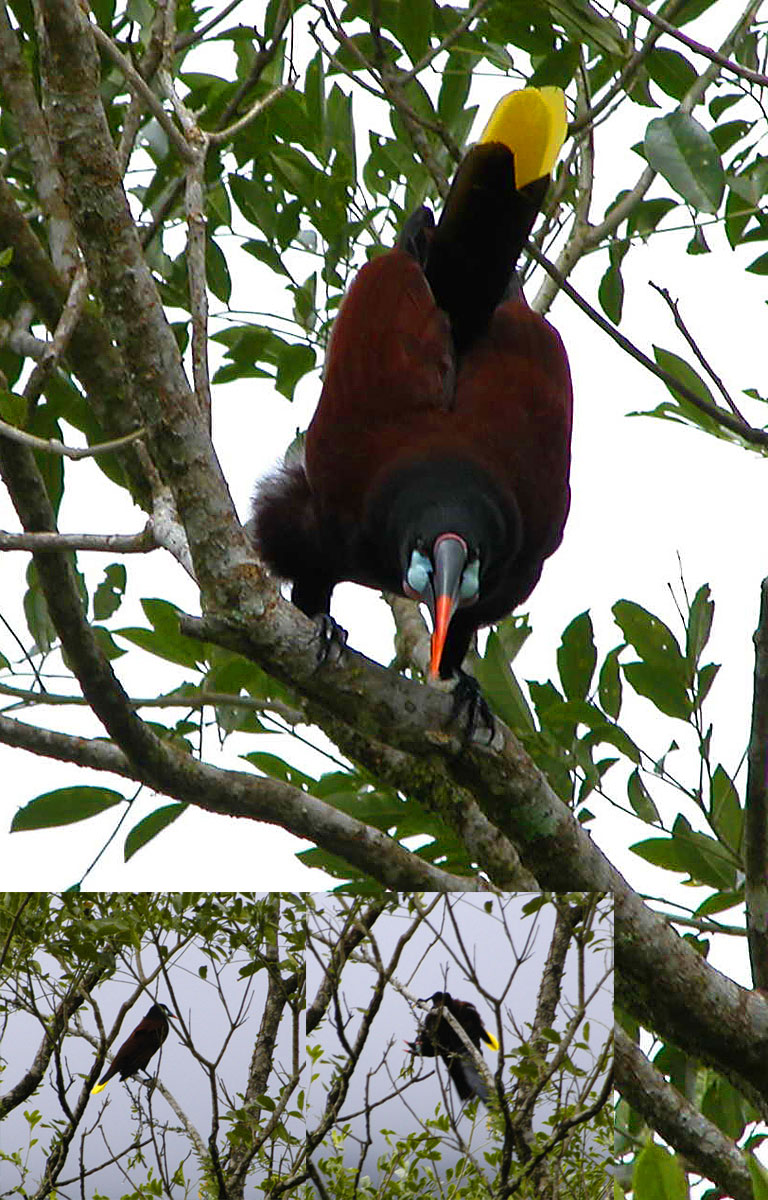
Outside the dining hall, a Montezuma Oropendola put on a characteristic display as he sang his song while swinging under his perch with wings and tail raised. He repeated this behavior for about an hour as we and others gathered to watch.
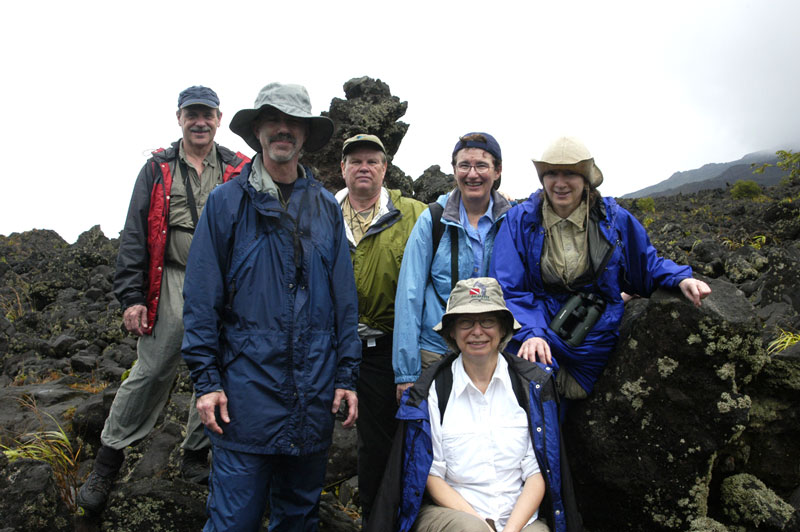
On the northern slope of Arenal Volcano amongst an old lava flow. Unlike Poas Volcano, we could not hike to Arenal's crater due to the danger of falling rocks. Here the team gathers. From left to right, Jim, me, Steve, Susan (squatting in front), Lyle and Denise.
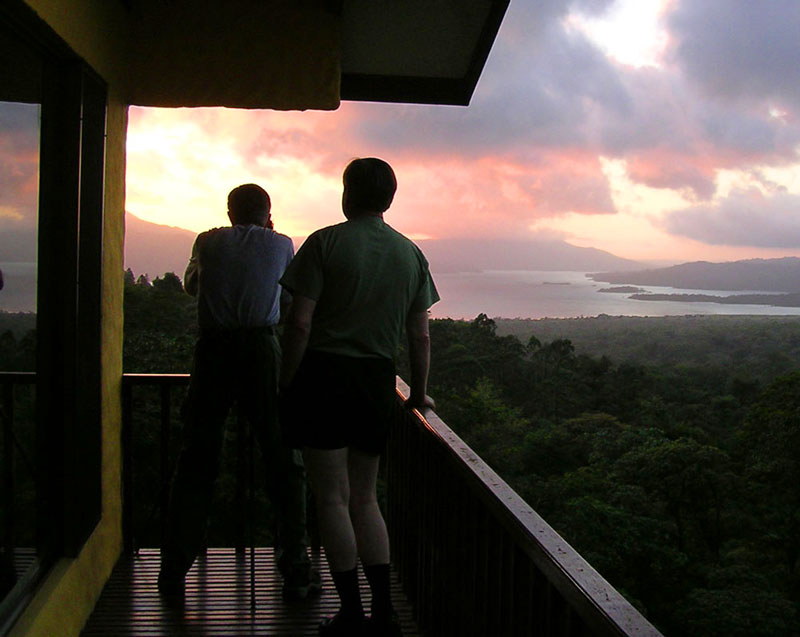
Photographers at work on our balcony facing Lake Arenal. Picture by Susan Dieterich.
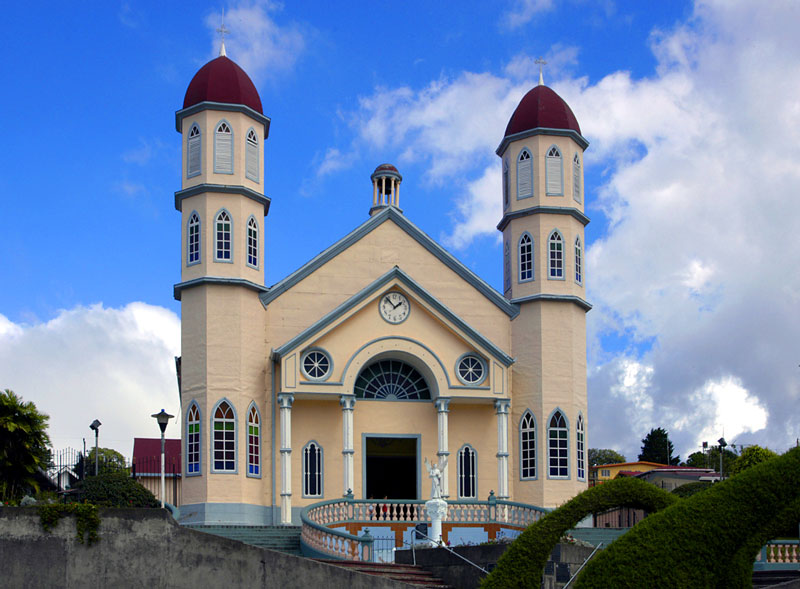
As we drove back to San Jose we passed through the picturesque little town of Zarcero. Here we got out to stretch our legs and explore the charming church at the city center, La Iglesia de San Rafael constructed in 1895, and the locally renowned topiary garden in front.
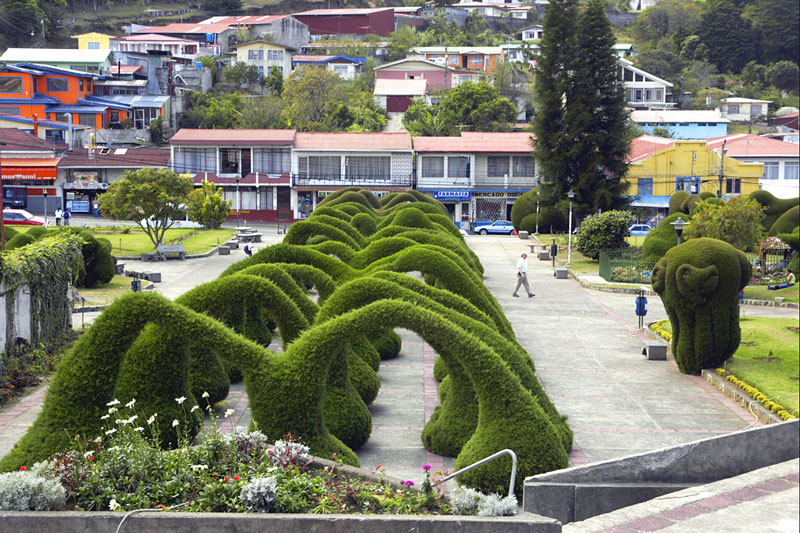
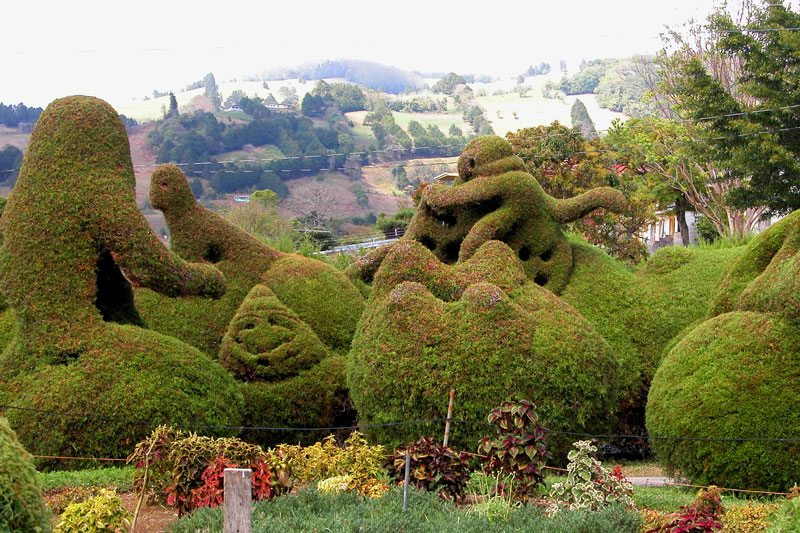
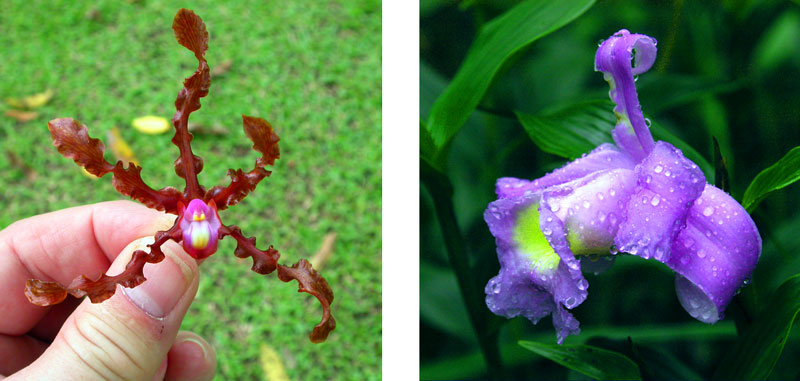
As I mentioned at the top, there are an estimated 1,400+ species of orchid in Costa Rica. We saw them everywhere we went, and between us we probably took over 100 photos of them. These are some those photos. Top left was photographed at the the La Selva Biological Station. Top right was photographed on the slope of Arenal Volcano.

The others were photographed at the Lankester Botonical Gardens (http://www.jardinbotanicolankester.org/ing/index.html) that is part of the University of Costa Rica and is dedicated to the study of epiphytic flora, which includes orchids.
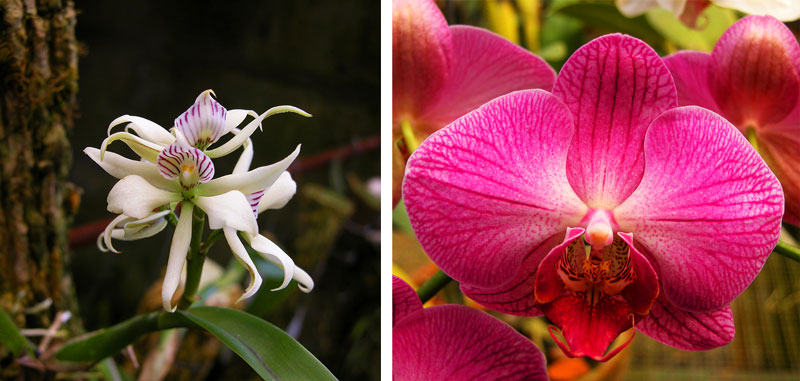
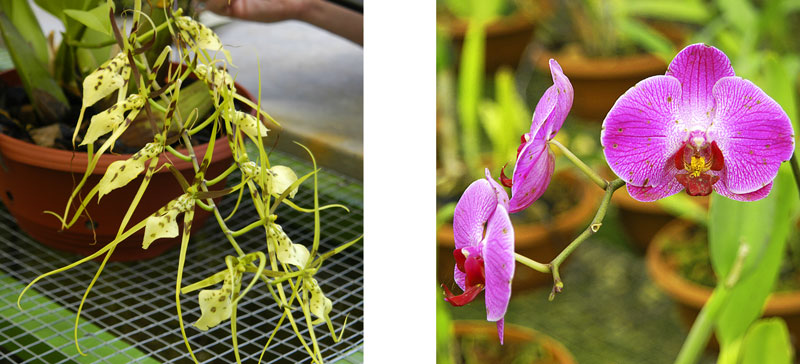
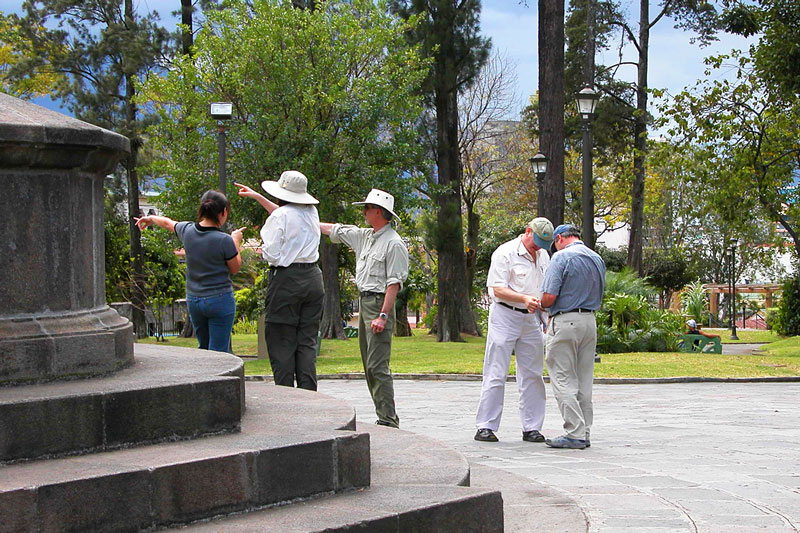
On our last day we set out to explore San Jose. Here we're clearly trying to figure out where we are. Denise and I are getting advice from a native, and Steve and Jim are consulting their map. Photo by Susan Dieterich.
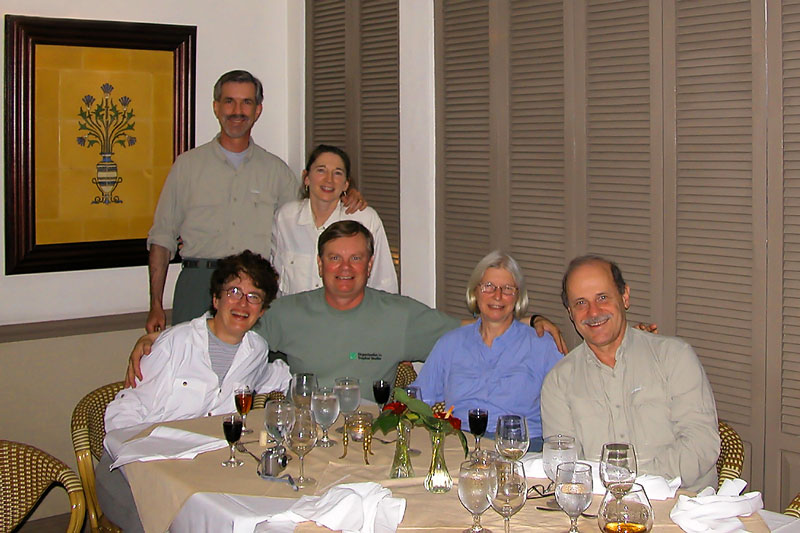
Here we are at the end of our trip, enjoying a splendid dinner in at the Grano de Oro restaurant (http://hotelgranodeoro.com/) in San Jose, for tomorrow we were to fly home. We hope you've enjoyed the pictures.
